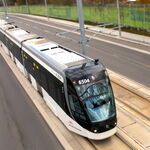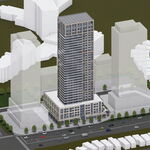JSF-1
Active Member
Made another map, this one based around the Toronto Railway Company, Toronto Civic Railway, and Toronto Suburban Railways at their peaks after World War I before they became part of the TTC in 1921. This map is the same as last time with it using a New York style designation system. TRC routes are given letters, TCR routes use numbers, and routes that heavily interline share a colour. On the topic of interlining you'll notice the TRC didn't do this as much as its predecessor the TSR did as the network under the TRC was expanded further and so there was no longer a need to jam all the routes onto King Street. This map only shows the standard services, the various tripper services and exhibition runs are not included. EDIT* Updated map to include the missing BLOOR WEST line removed the PAPE line, and added the local Toronto Suburban Railway lines.

Last edited:





